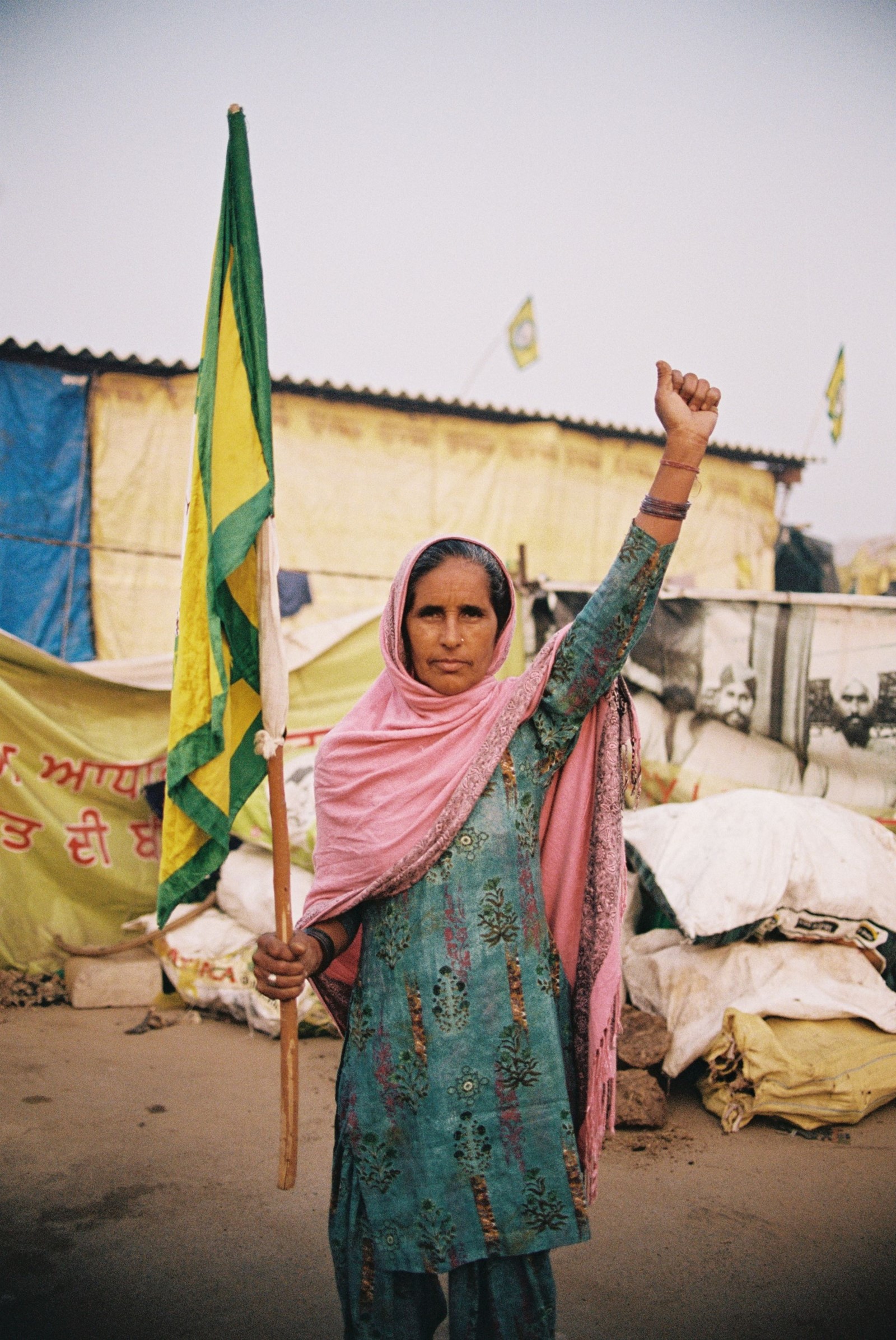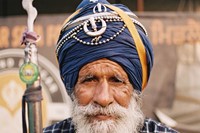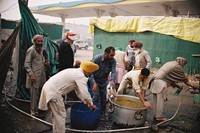In June 2020, two months into Covid-19 lockdowns across the planet, the Indian government announced three new bills to overhaul the country’s vast farming system. 70 per cent of India’s rural population relies upon agricultural labour, so crop prices inform the livelihoods and daily survival of hundreds of millions of people. The bills were viewed by many as an attempt to privatise and deregulate the farming sector: opening it up to the free market, removing agency from local farmers – who are known as kisaan – and granting greater powers to corporations.
In August 2020, farmers in southern Indian states started to protest against the bills. Following their unchecked passing by parliament the following month, communities across the farming-dense northern states of Punjab and Haryana organised to do the same. Word spread via social media, labour unions and educational outreach efforts amongst towns and villages. Two months after the bills were passed, on November 26, 2020, 472 unions came together to march to the outskirts of the Indian capital, chanting “Delhi chalo!” (“let’s go to Delhi!”). Tens of thousands of men and women riding buses, trucks and tractors, kitted out with speaker systems and cooking utensils, set up camp to blockade the roads and stage a morcha, a long-term, sit-down protest. Sikhs brought the religious act of langar, a communal kitchen offering food for all, regardless of background.
The protestors would remain there for one year. Over subsequent months, people across India and the world supported their efforts remotely, taking to the streets of cities, including Punjabi diaspora hubs like London and Toronto, waving green and yellow union flags, staging events to raise money. Yet, partially due to preoccupations with the pandemic, the protests barely made a dent in global media coverage. The Indian government attempted to crack down on them by redirecting train and bus routes from other parts of the country, stopping people travelling to Delhi, unleashing police-operated water cannons and churning out reports that framed the protests as acts of extremism. For many followers, it became a momentous opportunity to challenge the far-right hypercapitalism and anti-minority sentiments championed by Prime Minister Narendra Modi’s BJP party since it came to power in 2014.
The south London-raised community photographer Hark1karan flew into Delhi in November 2021, two weeks before Modi agreed to reverse the bills and the protests ended in triumph. Hark1karan’s first book, PIND: Portrait of a Village in Rural Punjab, which he self-published in 2020, depicts his mother’s ancestral pind (village) through rich, earthy images of local life. His new book, KISAAN – whose images are shot across a 24-hour period at the farmer protests – shows the same village and its community relocated to the outskirts of Delhi. It is a rare, intimate window into what is now widely labelled as one of the largest protests in human history.


Ciaran Thapar: Hi Hark. Tell me about yourself and your photography.
Hark1karan: I’m Punjabi and Sikh, and I aim to tell narratives with my photography that other people don’t tell. I usually capture things that I am a part of or have relationships with, so I guess that gives me a connection to what I’m taking photos of. A few years ago, I started telling the stories of Punjabis and Sikhs in the UK. One story I told was to go back to the source of the culture, my ancestral village in Punjab, to make my first book, PIND. It’s been evolving since then.
CT: In the introduction to your new book, KISAAN, you explain that you didn’t plan on making a book out of your recent trip to India. When did that plan come into action?
H: When we travelled out there, it was in the back of my mind that we were going to see the protest site. We landed at Delhi at 3am, and to get to Punjab from the airport, you have to drive past the Tikri border, where a lot of the protest was taking place. Initially, I thought, ‘OK, it’ll come and go after 20 seconds.’ But we drove for five minutes, ten minutes, and we could still see it. It was a lot more immense than what it looks like on social media. It was crazy. And it was very real. Seeing it not just from a distance, made me realise that this is impressive, this is history. And it was all happening with Covid, so not many people went to document it. I had some rolls of film, I know how to make a book … so I saw it as a duty.
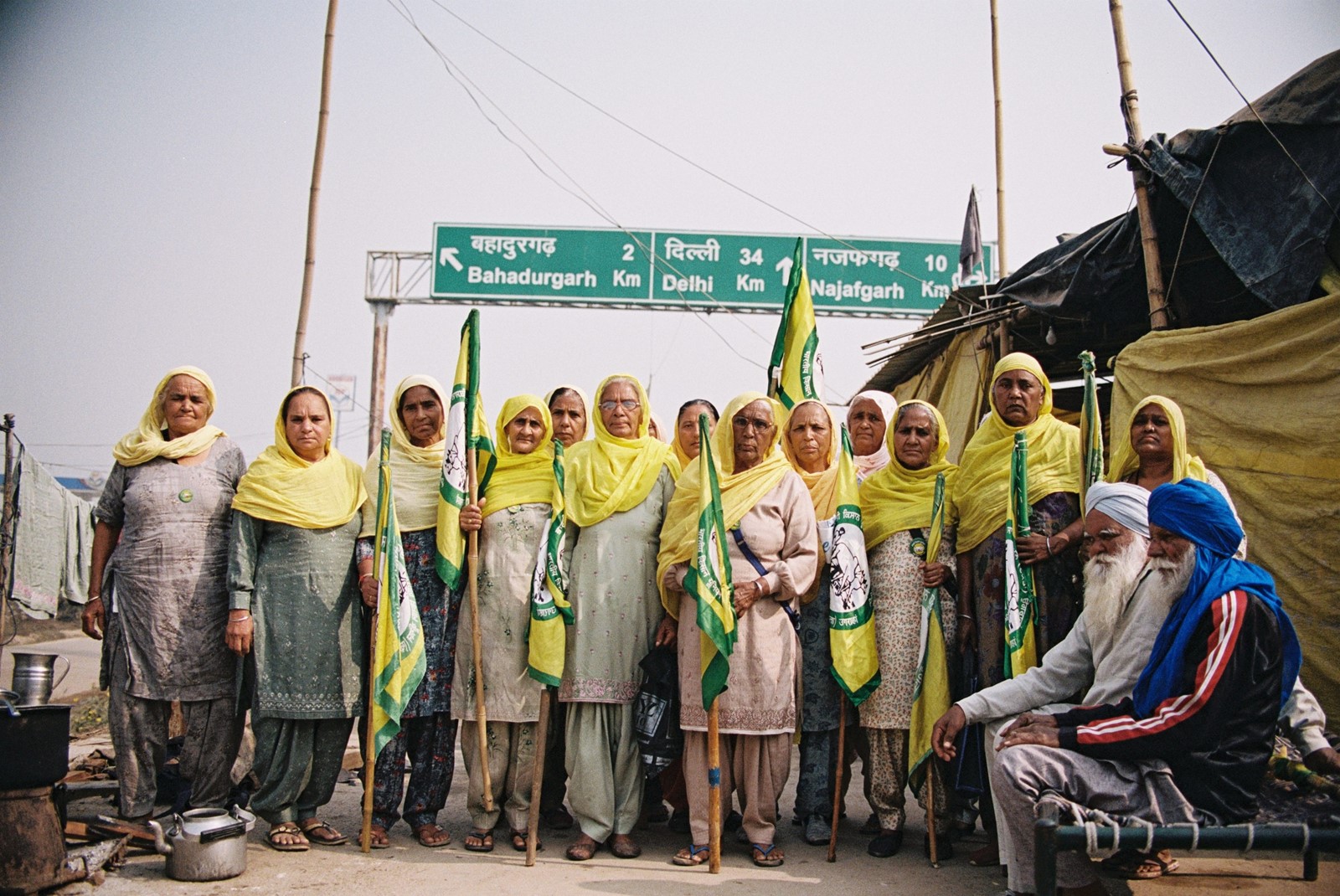
CT: You regard your photography as a practice of seva, the Sikh service of community. When you say ‘duty’, is this what you mean?
H: I’d say it’s more, you know, when you look back in history and you think, ‘what if I was there?’ It was one of those moments. A once-in-a-lifetime moment. Duty to the people, the culture, faith. Duty to yourself. And there was no harm in capturing it, as long as I stuck to certain principles and ethics.
CT: What did you learn from shooting KISAAN?
H: I was there staying with people from my mum’s village sleeping, eating, washing, going to the toilet. None of it felt foreign. I found it impressive that so many people got together. It was organised, clean. They’d been there for a whole year. The energy … it was like travelling to a different planet. You could see that the people there weren’t going to back down for anything. Imagine having such ownership of your own destiny as a people. It puts things into perspective for me. Here in the UK, it’s like a fairytale, seeing what happened over there. And that’s not to say it was easy. I’m not romanticising anything, it was very difficult. But they were just doing it.
“When you look back in history and you think: what if I was there? It was one of those moments. A once-in-a-lifetime moment” – Hark1karan
CT: I have no idea how you coordinate that number of people so quickly.
H: A lot of people in the south Asian community might be conservative, right? But it was farmers’ unions that got people together. This is what I tell people. Faith came into it too, but it was the unions who educated people on the ground. They got people together. Of course, they understand how villages work. They grow food, so they were never going to run out of it. They’re very self-sufficient. Everyone basically set up their villages how they were set up in Punjab: neighbouring villages and towns back home became neighbouring camps in the protest. People knew one another. If someone ran out of flour, or someone wanted to go back home, maybe someone in the nearby village could help them.
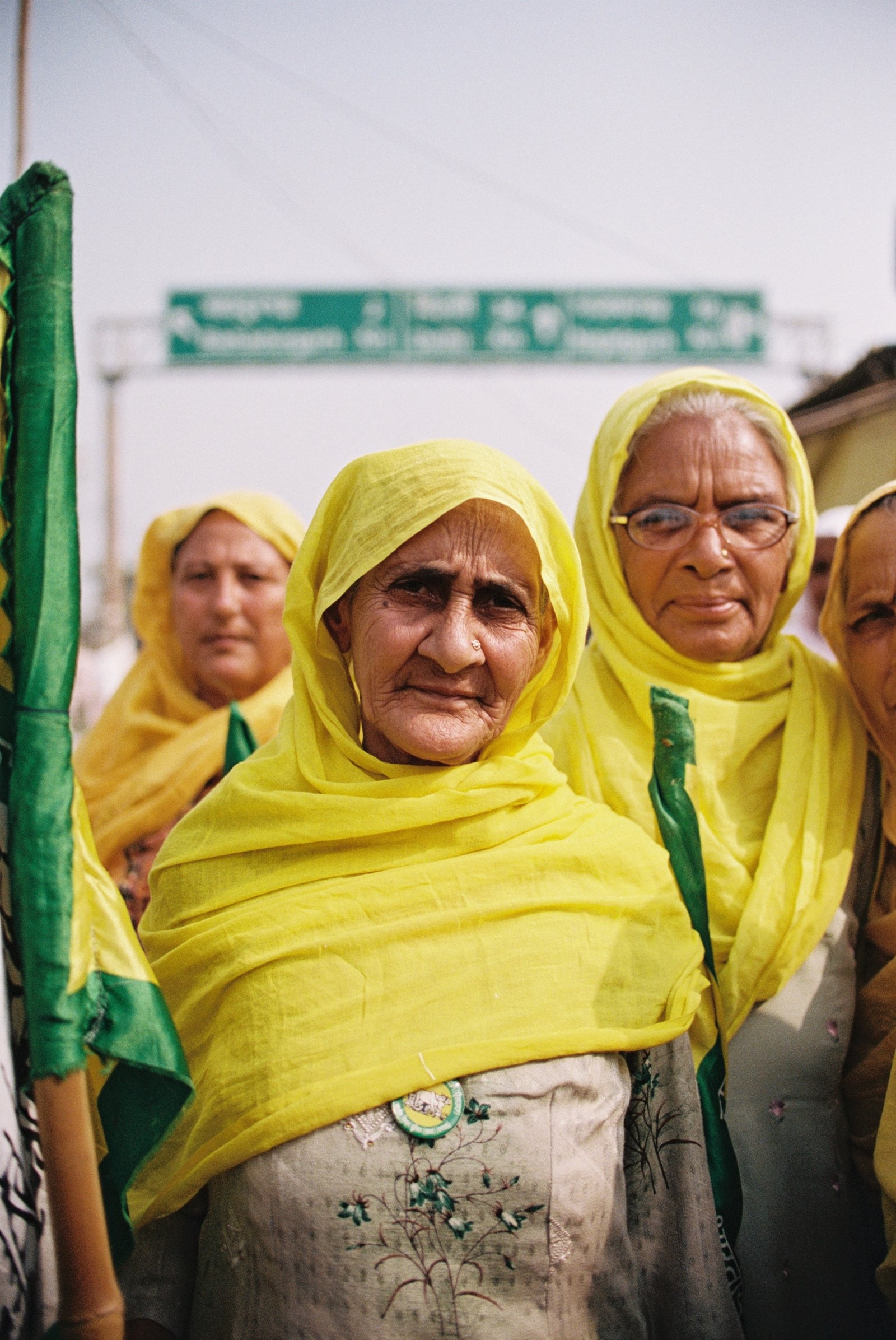
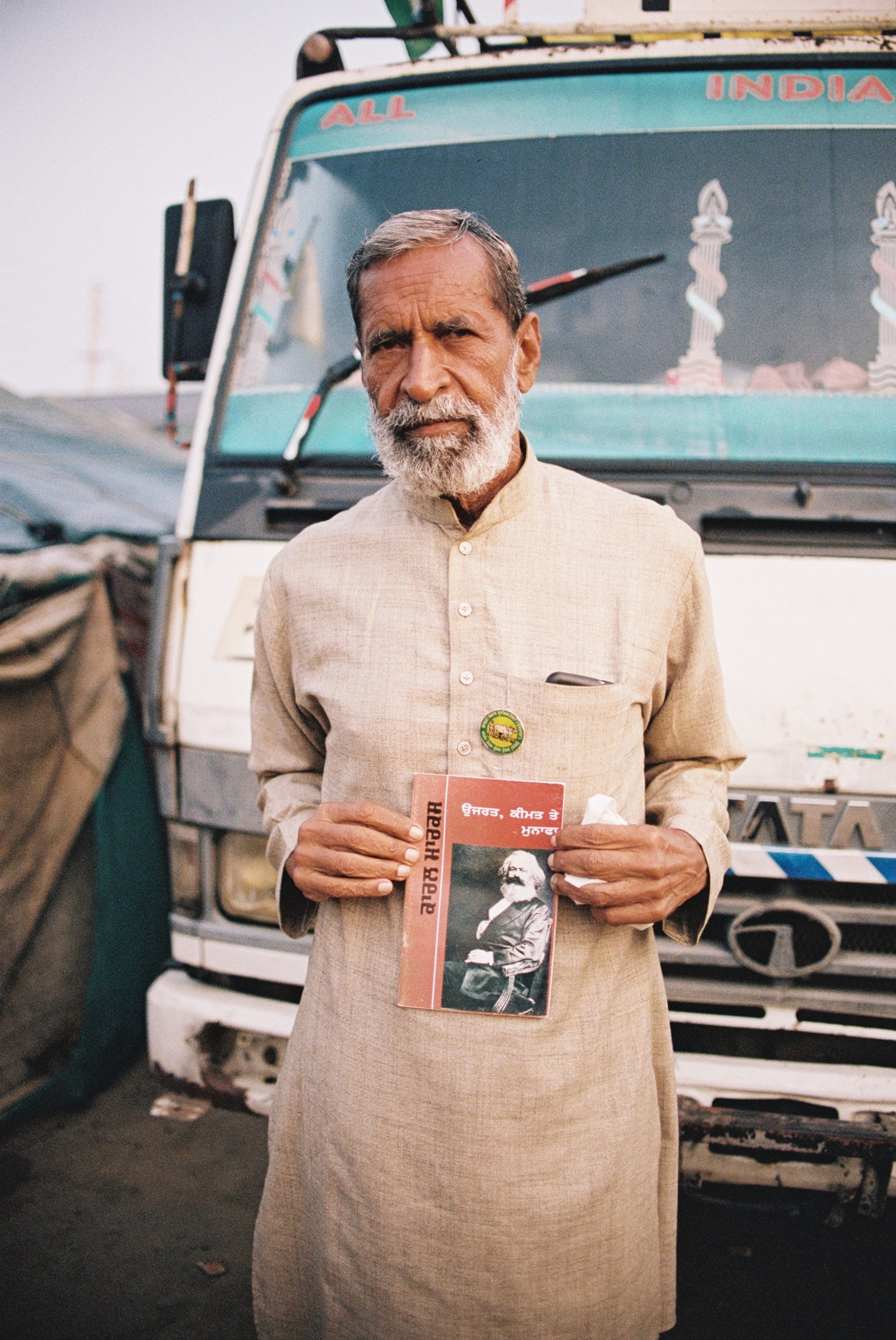
CT: In the UK right now, the cost of living crisis is spiralling out of control. Yet you could never imagine so many people taking such direct, long-term action like the farmers did in India.
H: It’s very difficult for us in London to protest, because we’re so ingrained in this system. You can’t break it. There is no relief from it, we’re stuck in it. Who can make that sacrifice? Who is gonna pay you if you don’t go to work? We’re so committed to this life. It’s very difficult to challenge the status quo. We can’t be effective unless we do it together, it’s not possible. But the kisaan showed me that you can stand up against things, you can change things. We have power, if we organise to use it.
CT: Your photography is sensitive to the subtle, domestic details of people’s lives. The cooking, cleaning, resting. Why?
H: Most people might look at these photos and think that it isn’t a protest. But this is actually how the protest functioned and survived. I just captured what I saw. People lasted a year by doing the little things. Everyone got ready in the morning. They dressed up smart and took pride in what they wore. Everyone was fed. It was a very organised, warm, homely atmosphere. As I walked around, people wanted their picture taken, they wanted the world to see what was going on. Everyone was really proud to be there.
CT: Describe how it felt in the camp. What did you eat?
H: It was very basic, for obvious reasons, so you had your roti (chapati), then daal, or carrot or potato sabji, then milk to make tea. You prepare those two meals, and that’s it. And because they grew everything in Punjab, they had enough to live on. Everyone had the same routine, they went with the natural clock of the seasons and the days. When the sun goes up, people wake up. When the sun goes down, you start to hear music blaring, young people blasting tunes. Music is a big part of Punjabi culture – that’s why there were so many protest songs released across 2020. Big, pumping basslines. Everyone was into it, young and old, which was nice to see. The men had a drink on weekends. It felt like a festival, like Glastonbury, but on steroids.
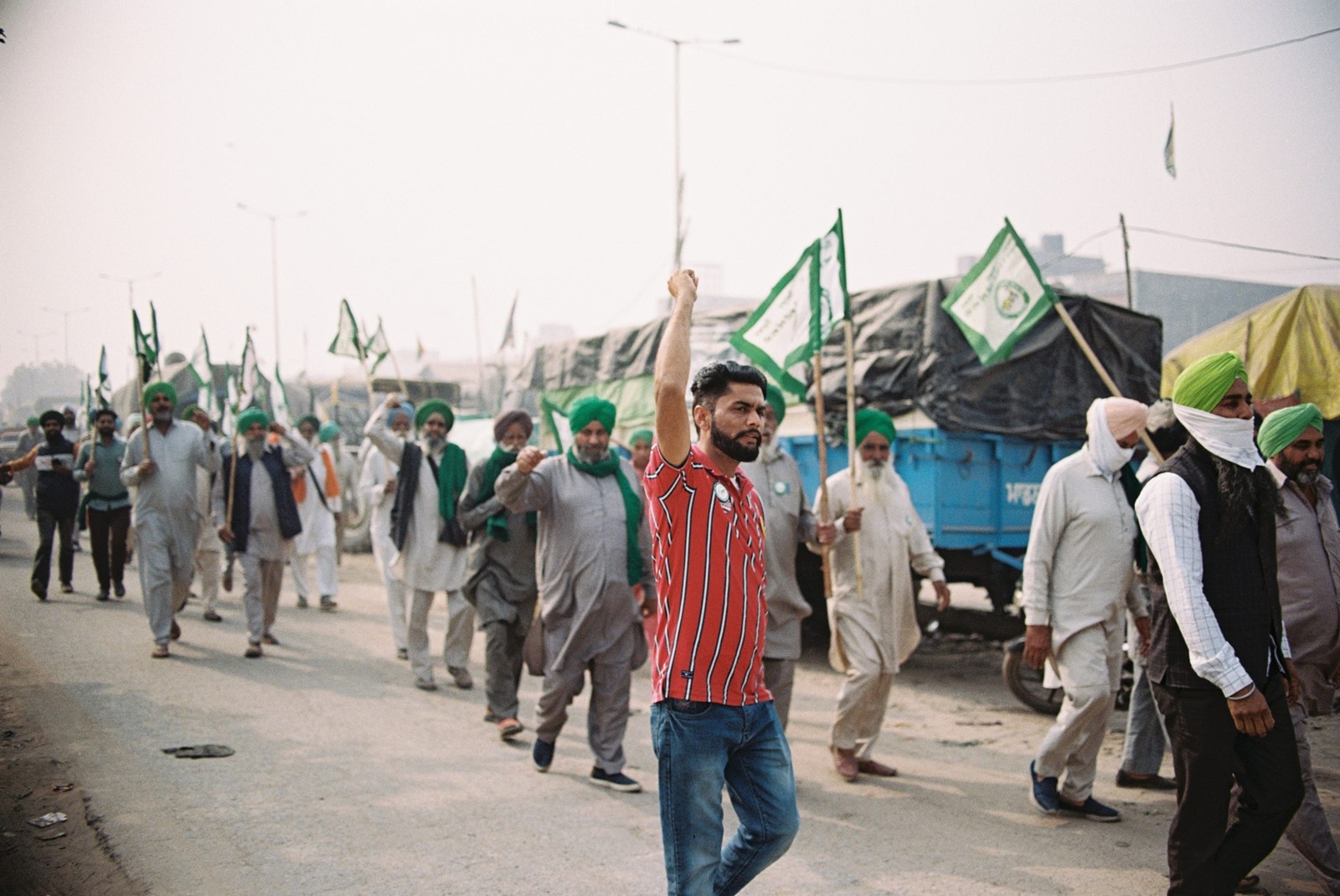
CT: While you were there, rumours filtered in about the protest coming to an end. What was that like?
H: I was there two weeks before the government repealed the laws and the protest finished. I shot the book one day after the one-year anniversary of them protesting, actually. People were saying that it could finish soon, so they seemed recharged. When we went round the site, there were people from all parts of India visiting. There were different borders of Delhi which reflected different parts of the country. Some people had come from the other side of Punjab, riding on a tractor. It takes a long time to travel that distance! It was also hard for distant parts of the country to come. The location made it easier for Punjabis to get involved, because it was so near, and Punjab has a better infrastructure than a lot of the country. Other states are poorer or further away. Imagine trying to travel up to Delhi from Kerala? And the government was stopping people travelling from other states. But some people still managed to visit.
“It’s very difficult for us in London to protest, because we’re so ingrained in this system. But the kisaan showed me that you can stand up against things, you can change things. We have power, if we organise to use it” – Hark1karan
CT: What’s your favourite photo?
H: The elderly woman, tying her hair. It’s just beautiful. Sometimes you don’t see beauty in these places – or they don’t show you beauty. She’s old, but she’s there. It’s intimate. Here is an elder who is inspirational, who is taking care of themselves. It didn’t feel like a struggle for her. She was strong.
CT: Why did you choose the cover?
H: I feel like sometimes men will take pictures and leave women out of the story. It would be easy to take a picture of a Sikh warrior and stick it on the front, but that doesn’t do justice to the reality of the protest. It was important to have women on the front. Women were encouraged to speak on the stages at the events. Women in my village were telling me how proud they were that they got to address the crowd. Everyone was included, everyone was in it together.
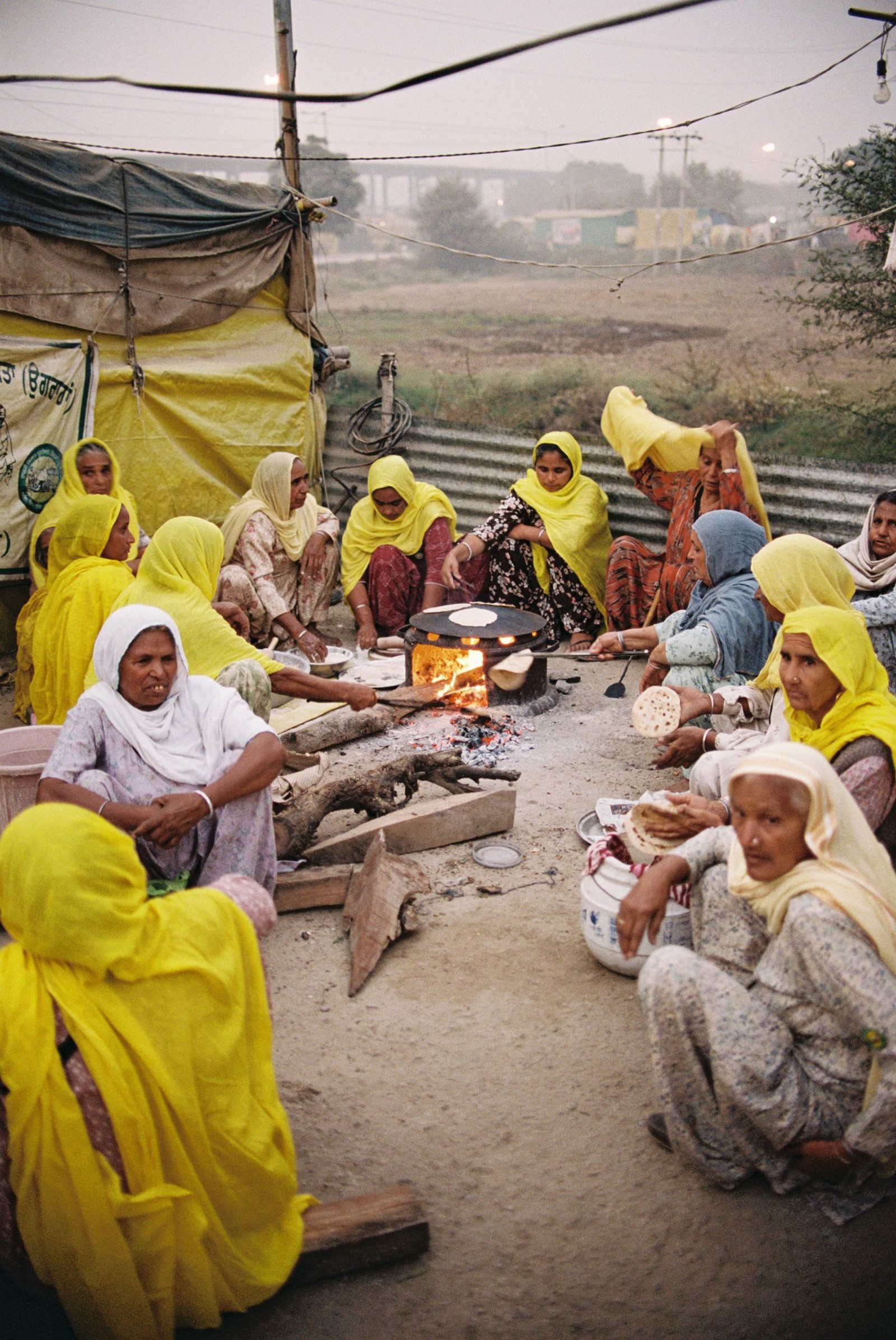
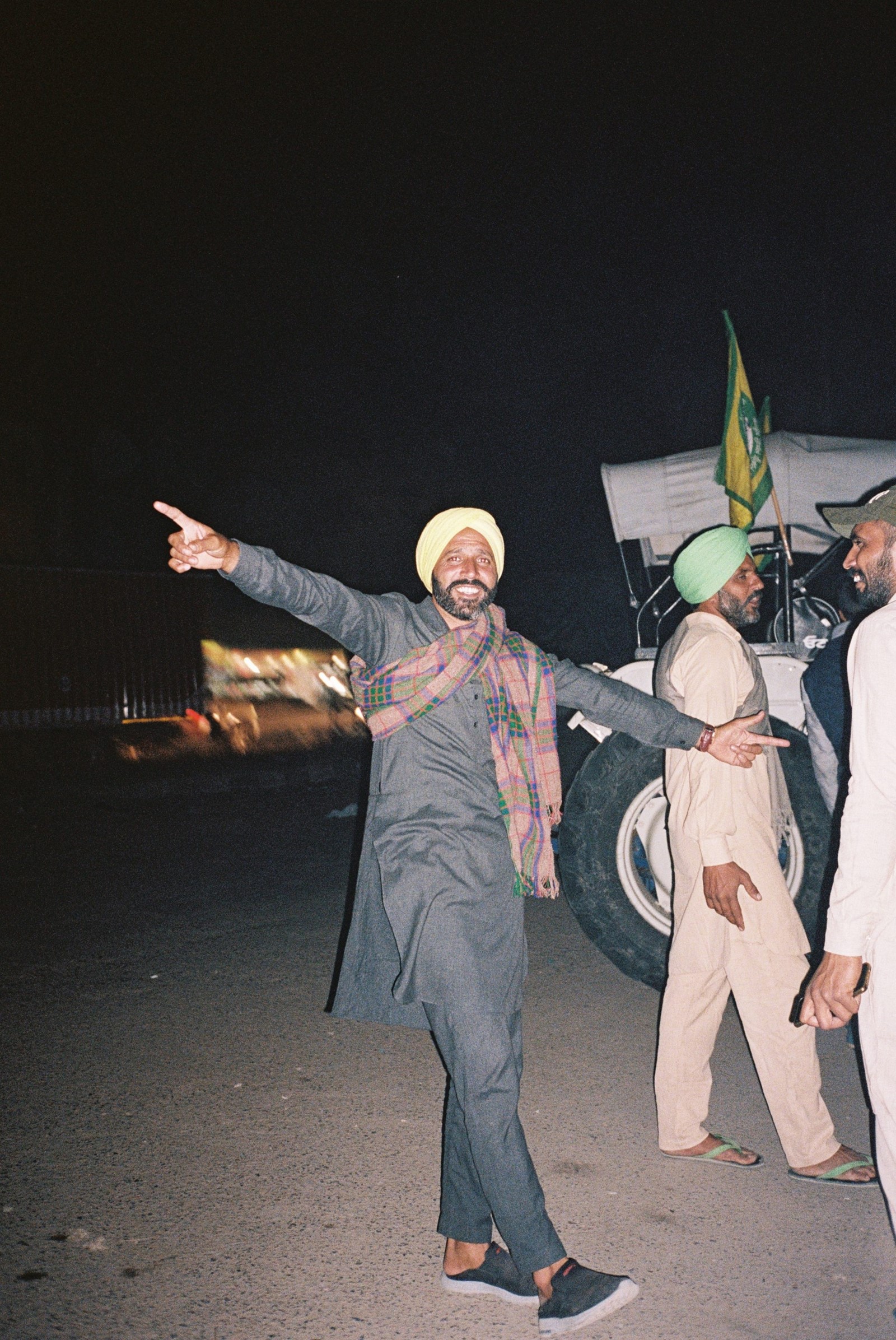
CT: I think it’s rare to see photography of south Asian women at the forefront of life, let alone at a protest.
H: I think you’re right. People rarely get to see non-western women and how strong they are, how capable they are. Especially for brown women here, they can see: this is us doing this. But in my photos I try to show how there are men and women doing all sorts of things. That’s why in the book there are pictures of men cutting vegetables and washing cooking utensils. It’s showing togetherness.
CT: Any final words?
H: It’s difficult for people to comprehend what happened over that year from afar, during Covid. Even for most Punjabis, people don’t understand it because of differences in language, culture … plus, sometimes you don’t want people to understand things like this, because it gives them ideas. I’m sure things like this are happening in other countries, people protesting en masse, but it might not get shown. This is one example. People are fighting in the street every day, but we’re just so desensitised to it. In the UK, I don’t know what is going to break us, to be honest.
KISAAN by Hark1karan is out now.
